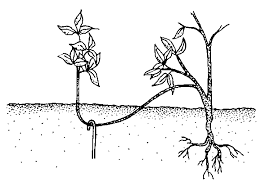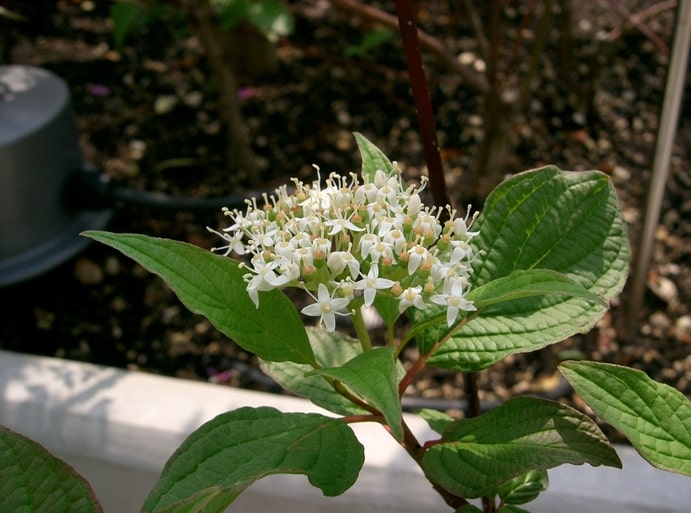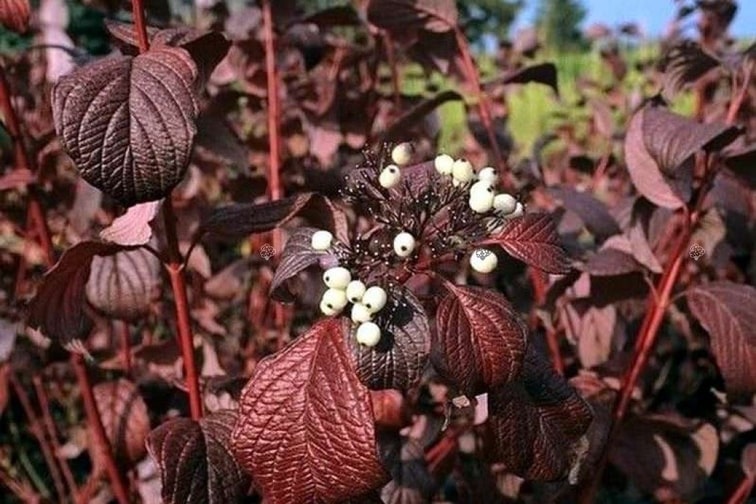This guide is meant to teach you how to propagate Siberian Pearl Dogwood (Cornus Alba ‘sibirica) and hopefully make it easier for you to sell them at your own nursery.

Hardiness Zone: 2 – 7

Soil Type: Well-drained, chalk, clay, loam, sand

Water: Average

Exposure: Full to Partial Sun
Siberian Pearl Dogwood (Cornus alba ‘sibirica variegata) is a perennial shrubs hardy up to zone 2. It’s a wonderful shrub that adds color as much through spring and summer as in winter.
New growth from the year, which is originally green will harden and turn red by autumn. Siberian dogwood leaves, which are also green during summer, will turn a dark red during autumn.
It grows fast, blooms fragrant white flowers, and produces berries that provide a source of food for birds, and boreal forest mammals.
Siberian dogwood is a suckering plant, it’ll send out new shoots underground through roots called rhizomes. These roots will sprout new growths, and if not taken care of, they can quickly form a colony.
Wildlife Value
Giant silk moths and a variety of butterflies favor Siberian dogwood as a host plant.
American robins, northern mockingbirds, and sparrows often build nests on the horizontal spanning branches.
Northern cardinals, tufted titmice, bluebirds, dark-eye juncos, waxwings and up to 30 more species of birds feast on dogwood berries.
Best Way to Propagate Siberian Dogwood
Method: Layering
Siberian dogwood’s suckering habit means it naturally propagates through layering, so it does most of the work for you!
What you can do to encourage ground layering is to plant a ‘mother’ dogwood deeper into the ground than you normally would. This plant will be your source of new plants through layering.
When you do that, its branches will be closer to the ground and have more chances of rooting naturally.
Alternatively, you can select the longest branches and bury them underground yourself. Hold them down with a landscaping pin and eventually, they will root. Afterward, you can separate the branch from the main plant and transplant it.

Method: Cuttings
The best method to propagate Siberian dogwood is by taking cuttings.
Take cuttings from 1-year-old wood during spring, before the buds start to open. Siberian dogwood cuttings need to be about 12-15 inches long ea (30-38cm) and at least 3/8 inch (1cm) diameter on small ends.
Propagate Siberian dogwood by cuttings in 4 easy steps
- Take a cutting and make sure it includes at least 3 pairs of buds. Cut at the node in a slanted way.
- Prepare a propagation bed with a sterile medium like coarse sand.
- Dip the moistened cutting end in rooting medium and plant deep enough into the sand that 2 pairs of buds are covered.
- Keep the propagation bed moistened with automatic misters or water and cover with plastic like a greenhouse.
How to Ready Siberian Dogwood for Sale
Siberian dogwood cuttings look like twigs even when you get them to root.
You can try to put one twig per pot but it might take some time to turn into a bush. To hasten the process, you can put more than one rooted cutting into a pot to make a fuller plant.
Trim the main stem to encourage new branch growth and favor more of a bush shape.
Pot them up in a well-drained, organic potting mix, place them in full sun, and keep them sufficiently moist and they will thrive!
Siberian dogwood bushes can grow as high as 9 feet in height and as wide as 12 feet in spread.
Still trying to figure out how to start your plant nursery? Check out our plant nursery guide here.



